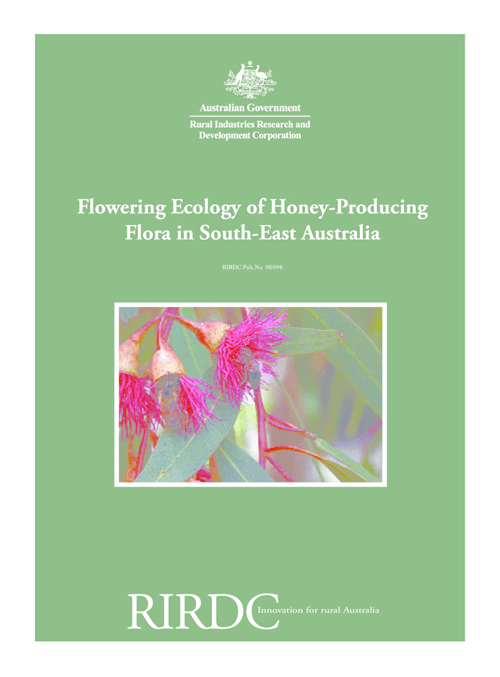Determining the impact of Varroa on virus transmission in Australian bees
This research aimed to contribute to ongoing surveillance of the Australian honey bee virus landscape as varroa establishes and spreads.
 HONEY BEE & POLLINATION
HONEY BEE & POLLINATION 
90 pages
Published: 23 Jul 2008
Author(s): Birtchnell, M, Gibson, M
Download report PDF
DownloadPurchase a hard copy - AUD $55.00
This report examines the flowering ecology (flowering patterns and the production of floral resources, i.e. nectar and pollen) of important Australian melliferous (honey-producing) flora. Aspects of flowering ecology that can have a negative impact on invertebrates, including honeybees, were also investigated. The research was based on information sourced by highly experienced, commercial beekeepers and, so, provides a valuable written record of long-term observations relating to flowering ecology which otherwise may be lost following the death of beekeepers. Results of this study are of far-reaching importance, not only to the beekeeping industry, but to land managers, the general public and the future of Australian flora and fauna.
An understanding of flowering ecology is vital for many reasons, including implementing appropriate management practices which ensure the sustainability and growth of natural resources and industries like the beekeeping industry. Despite the importance of such studies, very little research has considered flowering ecology in Australian flora. Furthermore, research often was based on short-term data; long-term data are widely acknowledged as being necessary in such research in order to determine ‘real’ flowering patterns. Thus, studies of flowering ecology which use long-term data are vital.